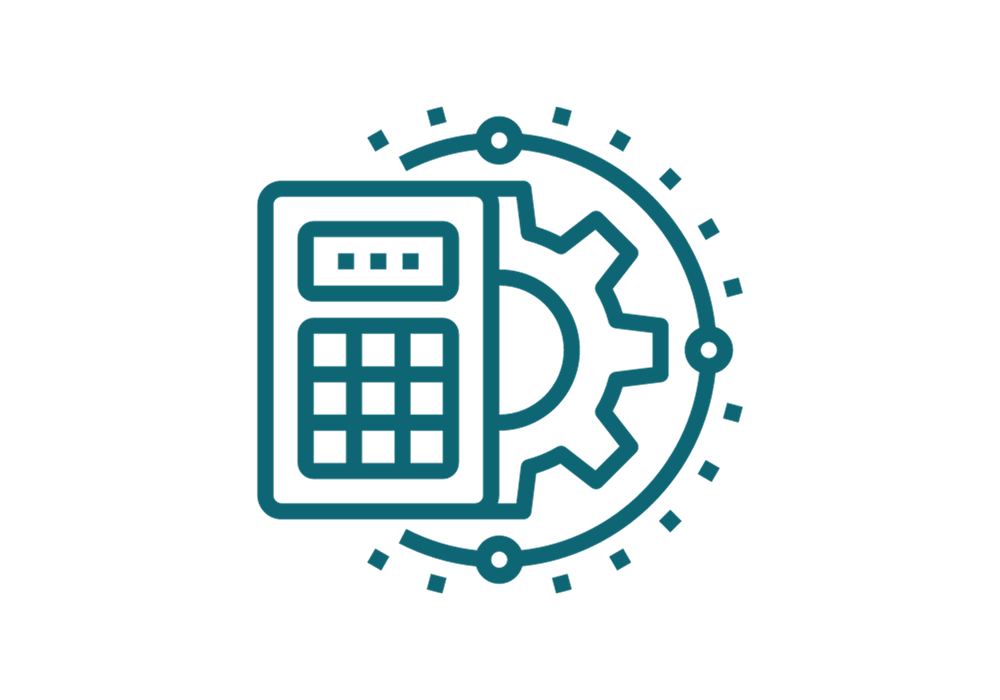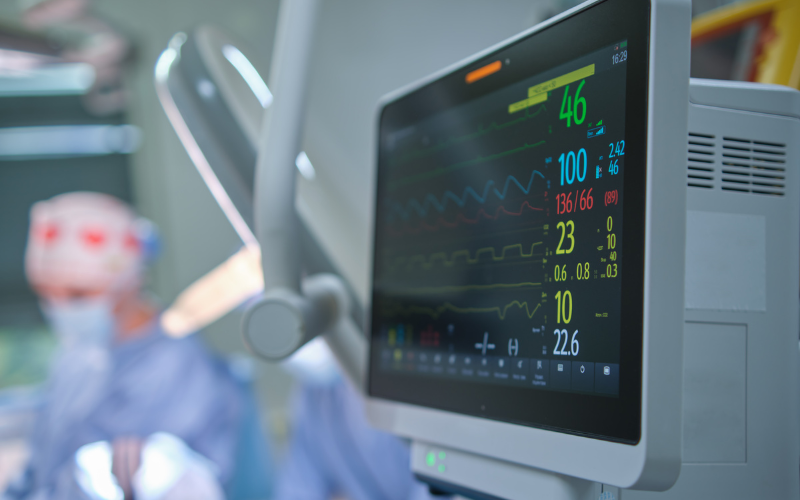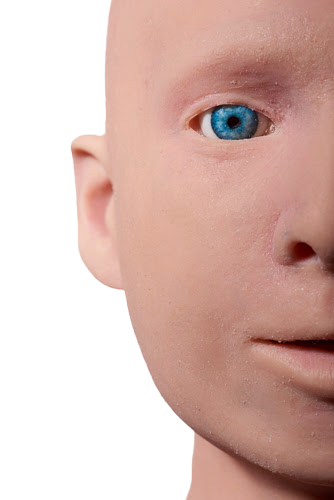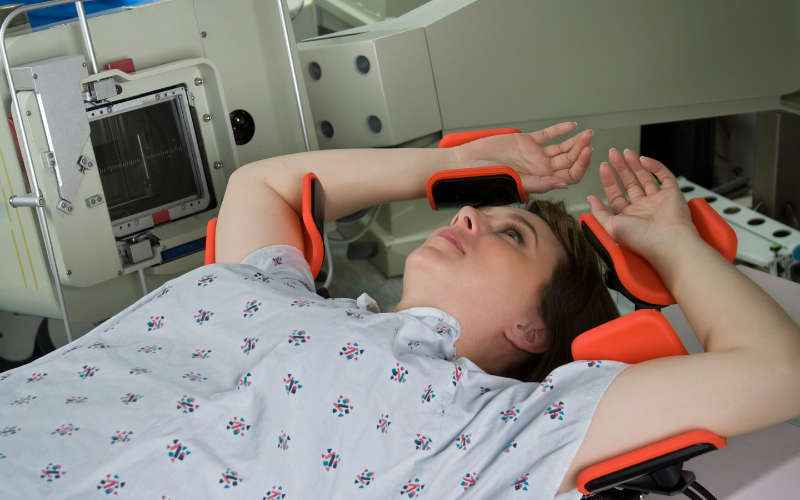
Your medical school may be used to operating with solely standardised patients, solely manikins or a mixture of both. Most places still use both, for different types of scenarios. There are certain medical scenarios where it is more convenient and effective in terms of training to use a real person to simulate a scenario instead of a responsive manikin, and vice versa.

There certainly isn’t a right or wrong option, as both come with their own positives and drawbacks, and their own situations where they are more/less effective than the other. A lot of the time, they are both used regularly by medical schools or universities, rather than one or the other.
The concept of standardised or simulated patients was first introduced to the medical training world in the 1960s, around the same time CPR manikins were invented and introduced. Responsive manikins, however, came much later, with the introduction of AI in recent years building the foundations for them.
The fact that learners will be interacting with an actual human being obviously means it will be a highly realistic experience, especially in terms of the communication side of things. Building an emotional connection with a patient is a key part of treating them as it makes them feel more comfortable as well as allowing you to learn more about the patient without coming across as too invasive.

This human interaction allows learners to practice skills such as bedside manner and empathy, things that wouldn’t be possible with barriers such as manikins or devices that replicate the physical elements of a person, but can’t replicate the emotional side of a person. Even though responsive manikins do allow for this to a certain extent, having a real person doing it allows learners to build confidence ready for real life scenarios.
Standardised patients can portray a wide range of medical scenarios, conditions, emotions and responses. Many medical scenarios are dependent on how the patient responds and communicates and this can completely change the outcome of the situation or how a medical team approaches it from their side. Whilst responsive manikins are able to communicate and respond to scenarios, this is more limited and predictable than that of an actual person.
A huge benefit of a standardised patient is their ability to give feedback instantly, which is both in-depth and specific. They are also able to provide context to the feedback they give, and how they felt as a patient emotionally, whereas responsive manikins rely more on data to provide feedback. A simulated patient can also take part in group or singular debriefing sessions, analysing what the learner did well and what they could improve on in as much detail as the trainer or learner requires in order to learn and improve on for next time.
Hiring and training standardised/simulated patients can be expensive, especially if used regularly. Whilst responsive manikins can feel expensive on face value, they will most likely work out to be much cheaper in the long run than constantly having to pay to get standardised patients in.

Logistically, the availability of standardised patients can be limited or could vary, making scheduling them difficult. This is arguably the biggest downside to standardised patients instead of responsive manikins, as the manikins are readily available whenever you need to use them.
Whilst standardised patients do come with variability, there are certain medical situations and scenarios where it is difficult or impossible to replicate the real life outcome or response. For example, if learners are being trained on patient monitoring with the vital signs using a simulated patient, they are only going to be faced with normal readings, provided the patient is healthy. With a manikin, you are able to change heart rates and other vital signs in order for learners to get experience with different outcomes and situations. Whilst simulated patients are able to portray a wide range of medical scenarios, they aren’t able to simulate unexpected results or readings, or ones of a medically ill patient that needs treatment.

The standardised patients’ performance may also vary, meaning some days might be very beneficial for the learner and realistic, whilst other days are unrealistic and the learners don’t absorb much information or gain much from the feedback they receive. It is important that learners gain exposure to all types of scenarios and patient responses in order to be fully prepared for real-life situations.

Responsive manikins are great options for repeatable, controlled scenarios. Due to standardised patients being real people, you can’t expect the same result or responses every time a scenario is done. Whereas with a responsive manikin, they can be programmed to act a certain way or produce certain results which won’t vary or fluctuate. Manikins that use medical scenario software will also allow you to set scenarios and use them as many times as you like.
For example, ALEX Patient Communication Simulator has a number of pre-built scenarios to choose from, as well as the option to create your own, all to be used as many times as you like. ALEX’s software also provides feedback to students and even has an in-built camera to monitor performance.
With responsive manikins, instructors can also control and change variables whilst the scenario is ongoing just through the click of a button on a remote device, which is a lot easier than having to explain to a simulated patient that the scenario is changing.
A huge selling point and a reason why they are so widely used is that manikins, particularly responsive manikins, are ideal for practicing high-risk medical procedures that would otherwise pose a risk to a real person, but are fine to practice on a manikin. This gives learners much needed exposure and confidence when dealing with high risk situations.
Also from a safety point of view, manikins allow learners to make mistakes without any adverse consequences; mistakes that they perhaps wouldn’t be able to make with a simulated patient. This means that students are able to learn certain things faster due to the fact they can learn from mistakes that they couldn’t make without the use of a responsive manikin.
As mentioned previously, most responsive manikins will come with a software that runs alongside them. Usually, the software will collect data on student performance which can be used for feedback. Standardised patients are able to give more empathetic, emotional feedback whereas manikins rely on the data they’ve collected which can pick up on areas in which an assessor or simulated patient may not notice.

ALEX is able to record data in the form of numerous metrics, such as depth rate and rhythm when administering CPR, drug administration and more. The reason this is so effective is because the students themselves are also able to login to the backend and view the data that has been collected so that they can go through it if and when they need, meaning they won’t forget feedback which they might do if it was given in person.
A potential drawback of the responsive manikin is that it lacks the realism of authentic human interaction, which is a big part of treating patients. Building a connection and making the patient feel comfortable in a clinical setting can be just as important as the medical procedures that take place, which can be difficult to practice with a manikin. However, this will only improve as time goes on, due to the rapid advancements in artificial intelligence in recent months, which will only continue to evolve. Don’t be surprised if AI can replicate human emotions accurately in the coming years.
Similar to standardised patients, responsive manikins may also have some limitations to which medical conditions they can accurately replicate. The majority of manikins and especially responsive manikins come with a list of medical scenarios which you are able to practice with them. For example, some responsive manikins may have a bigger focus on basic life support such as CPR and airway management, whereas others may work better with more advanced clinical skills practices. The beauty with this, though, is that you can purchase different manikins that are able to perform different skills, meaning students will still experience the full spectrum of patient encounters and situations.
In medical simulation, the choice between simulated/standardised patients (SPs) and responsive manikins depends on various factors, including educational goals, resources, and logistical considerations. Each method comes with its set of advantages and drawbacks.
Standardised patients offer an unparalleled level of realism and human interaction, enabling learners to hone their communication, empathy, and bedside manner skills. The variability in scenarios presented by SPs exposes learners to diverse situations and enhances adaptability. Additionally, SPs can provide immediate, specific feedback during debriefing sessions, facilitating learner improvement.

On the other hand, responsive manikins provide instructors with precise control and reproducibility of scenarios, making them invaluable for practicing high-risk procedures without exposing real patients to any risk. Manikins often come equipped with data collection capabilities, allowing instructors to assess learner performance objectively.
While these benefits of responsive manikins are substantial, it’s essential to acknowledge that they may not fully replicate the emotional nuances and human interaction found in real patient encounters. Simulated patients excel in this regard, offering learners the opportunity to develop crucial interpersonal skills.
In conclusion, both simulated patients and responsive manikins have their unique strengths and weaknesses. The choice between them should align with specific educational objectives and available resources. Ideally, a balanced approach that incorporates aspects of both methods can provide a comprehensive and effective medical simulation experience. By leveraging the strengths of responsive manikins and supplementing them with SP-based scenarios when appropriate, healthcare educators can maximise the benefits of medical simulation while preparing future professionals for the complexities of patient care.

Sign up to our newsletter
Sign up to our newsletter for the latest product updates, announcements, and insights.
© Simulaids 2024. All Rights Reserved.